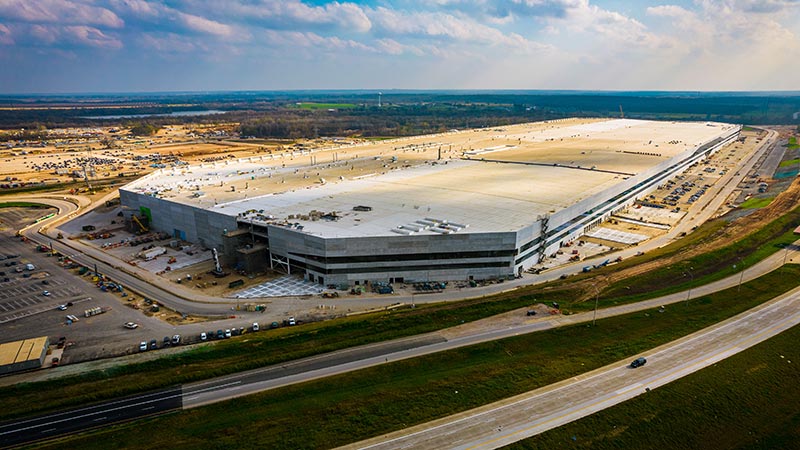Earlier this summer, legislation called the Inflation Reduction Act of 2022 (Public Law 117-169) was passed to help reduce the rising cost of living. In effect since August 16, 2022, the bill includes a number of measures to help reduce inflation, including a new Clean Vehicle Credit. This credit offers a credit of up to $7,500 for those who purchase a new electric car and $4,000 for used electric vehicles.
Some herald this as a big boost for the auto industry. Yet, since its announcement, many automakers shared their fear the new law could drive customers away from electric vehicles—at least initially.
So which is it? Let’s look deeper into some of the questions raised.
Who is Eligible To Receive the EV Tax Credit?
To be eligible for the credit, the vehicle must be powered by a battery with a capacity of at least 4 kilowatt-hours and have a range of at least 20 miles when operated in electric mode. The tax credit is available for both new and used vehicles, as well as hydrogen powered vehicles.
Importantly, it is also available at the point of sale, and does not require filing taxes to redeem it, making it far more accessible and influential during a clean vehicle sale.
However, the EV tax credit is subject to a number of limitations, and is actually broken into two parts based on where the critical minerals and the battery is sourced. To be eligible, the vehicle’s final assembly must be in North America, or with a country that the US has a free trade agreement, like Mexico.
The credit is divided evenly in halves. For the first half of the credit, prior to 2024, 40% of critical minerals like aluminum, cobalt, lithium, nickel, and graphite must be sourced domestically. In 2026, this percentage ratchets up to 80%. For the second, the percentage of the value of the battery matters. Prior to 2025, 50% of the value must be sourced from North America, and after 2028, 100% of the battery must come from the US economy.
And there is a poison pill lurking too. After 2024, if any of the critical minerals come from a foriegn entity of concern, including China, all credits are voided.
There is also a price limitation, designed to create more demand for affordable clean vehicles, and provide incentive to cap inflation. According to the bill, trucks have to cost less than $80,000 and sedans need to be less than $55,000.
Similarly, there is an income restriction. Married couples with adjusted gross income over $300,000, heads of households with income over $225,000 or other taxpayers with income exceeding $150,000 are not eligible.
For used clean vehicle sales, the new credit equals the lesser of either $4,000, or 30 percent of the sale price for vehicles under $25,000. This credit only applies to the first resale of the vehicle and includes restrictions on sales between related parties. Buyers with adjusted gross income of up to $75,000 ($150,000 for married couples filing jointly and $112,500 for head of household filers) are eligible.
Finally, the credit is only available for vehicles that are purchased. The owners of the vehicles who lease or offer subscriptions to vehicles can choose to pass on savings to their customers, but the tax credit is only granted from the government once per car.
“Spring Free EV aims to pass on as much savings to our customers as possible. Our view is that if we can recognize the tax credit, we lower the cost basis of our subscription model,” stated Visrin Vichit-Vadakan, head of business development at Spring Free EV.
“Right now the options are limited due to manufacturing, but we are doing everything in our power to bring these tax credits in and pass them on to our clients.” – Visrin Vichit-Vadakan, head of business development at Spring Free EV
Why do automakers think it could drive buyers away—at least in the short term?
This fear manifests from today’s manufacturing being far askew from the future state the law requires. Simply put, their current manufacturing will prevent their customers from being eligible for a while. Automakers today are just not sourcing nearly enough critical minerals or batteries domestically. And for an industry already fraught with supply chain problems, finding or creating domestic suppliers could take years.

John Bozzella, the head of the Alliance for Automotive Innovation, claims that currently about 70% of electric vehicles do not meet the new standards and will not qualify for the tax credit.
“The tax credit that the new act replaces was really designed to encourage consumers to purchase an electric vehicle, to become more aware and to get into that vehicle, kick the tires and drive it away,” explains Bozella. “This new tax credit is really designed for a separate purpose. And that purpose is to really reduce the industry’s reliance on China for critical minerals, raw materials and battery components. It’s a different goal. And, by the way, that’s a goal that the auto industry absolutely supports. But because there are significant hurdles that manufacturers need to get over in order for those vehicles to qualify, it’s going to take a few years, I think, before a broad number of consumers will see this tax credit available to them.”
Which cars benefit from the Clean Vehicle Credit today?
According to the US Dept of Energy, the following table provides a list of Model Year 2022 and early Model Year 2023 vehicles with final assembly in North America based on data submitted to the National Highway Traffic Safety Administration (NHTSA) and FuelEconomy.gov as of August 1, 2022.
| Model Year | Vehicle | Note |
| 2022 | Audi Q5 | |
| 2022 | BMW 330e | |
| 2022 | BMW X5 | |
| 2022 | Chevrolet Bolt EUV | Manufacturer sales cap met |
| 2022 | Chevrolet Bolt EV | Manufacturer sales cap met |
| 2022 | Chrysler Pacifica PHEV | |
| 2022 | Ford Escape PHEV | |
| 2022 | Ford F Series | |
| 2022 | Ford Mustang MACH E | |
| 2022 | Ford Transit Van | |
| 2022 | GMC Hummer Pickup | Manufacturer sales cap met |
| 2022 | GMC Hummer SUV | Manufacturer sales cap met |
| 2022 | Jeep Grand Cherokee PHEV | |
| 2022 | Jeep Wrangler PHEV | |
| 2022 | Lincoln Aviator PHEV | |
| 2022 | Lincoln Corsair Plug-in | |
| 2022 | Lucid Air | |
| 2022 | Nissan Leaf | |
| 2022 | Rivian EDV | |
| 2022 | Rivian R1S | |
| 2022 | Rivian R1T | |
| 2022 | Tesla Model 3 | Manufacturer sales cap met |
| 2022 | Tesla Model S | Manufacturer sales cap met |
| 2022 | Tesla Model X | Manufacturer sales cap met |
| 2022 | Tesla Model Y | Manufacturer sales cap met |
| 2022 | Volvo S60 | |
| 2023 | BMW 330e | |
| 2023 | Bolt EV | Manufacturer sales cap met |
| 2023 | Cadillac Lyriq | Manufacturer sales cap met |
| 2023 | Mercedes EQS SUV | |
| 2023 | Nissan Leaf |
NOTE: Some manufacturers that have vehicles assembled in North America have reached a cap of 200,000 EV credits used and are therefore not currently eligible for the Clean Vehicle Credit.
How Will It Improve EV Infrastructure?
Knowing the tax credits were designed as an aspirational goal for many manufacturers, the new law also aims to improve EV infrastructure. The new law includes over $60 billion in incentives to help manufacturers build and retool their manufacturing to be eligible for future credits.

A key focus of the new law works on increasing the number of charging stations. The first provision extends the existing federal tax credit on charging equipment through 2032. The tax credit remains unchanged at 30%, up to $1,000.
For commercial uses, the maximum credit is extended to $100,000 from $30,000. This means, if a business installs 10 qualified charging stations at $15,000 each, the total cost would be $150,000. Previously, a credit of $45,000 would be calculated, but only $30,000 would be allowed due to the limitation. Now, a credit of $4,500 would be calculated per charging station, with no limitation on each unit, for a total credit of $45,000.
There is a catch. The equipment must be placed in a low-income community or non-urban area, which will help connect the charging deserts in poorer areas, making EVs more accessible to all in the long run. However, for markets with dense population, this will likely have little impact
Finally, the new law also provides tax credits for clean sources energy, including up to $30 billion in targeted grant and loan programs to accelerate the transition to clean power generation. Importantly the bill also allocates over $9 billion for federal procurement of domestically produced clean technologies—including $3 billion to electrify the United States Postal Service fleet. These expenditures will significantly buoy and help to create stable demand for EVs and clean energy across their markets.
So, what does this mean for you?
If you are considering purchasing a new electric car today, the new tax credits will mean little to you in the immediate term, unless you are purchasing one of the cars listed in the table above. Even then, the vehicles that have met sales caps will not be eligible until 2023.
Next, you need to consider your income profile. If you are rich and want to buy an EV that is not a Tesla or GM, buy it this year. If you are in a mid or lower income bracket—or specifically want Tesla or GM (including Chevy) electric vehicles—you may want to wait for the credits to kick in. If you want to buy an EV that is not Tesla and costs more than $55K for a sedan or $80k for an SUV, it will be better to do it this year.
If you want to buy a used electric vehicle and meet the income caps, wait until next year when there is a used EV credit for the first time.
Beyond the tax credits, the law is designed to build confidence and steady demand for electric vehicles over the long term. Specifically, it aims to accelerate the United State’s transition to clean energy vehicles—both for using them, and building them. This important groundwork will encourage domestic production and innovation, while also injecting a huge pool of government funding to buy these goods and services consistently.
In short, it means the US government is seriously investing our markets and budgets to advance our leadership in electric vehicles, and if you are considering purchasing a new vehicle—you should have greater confidence that EVs will be a good investment for yourself and the US economy.
